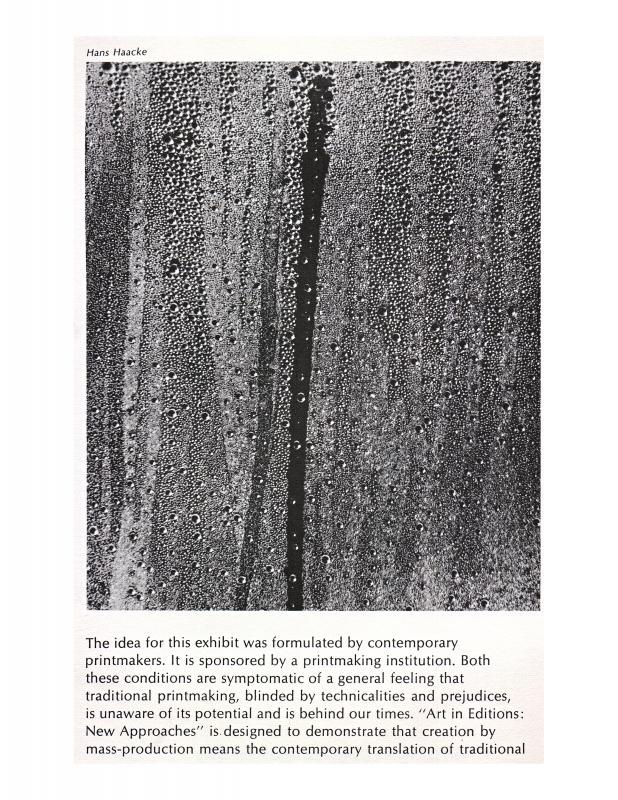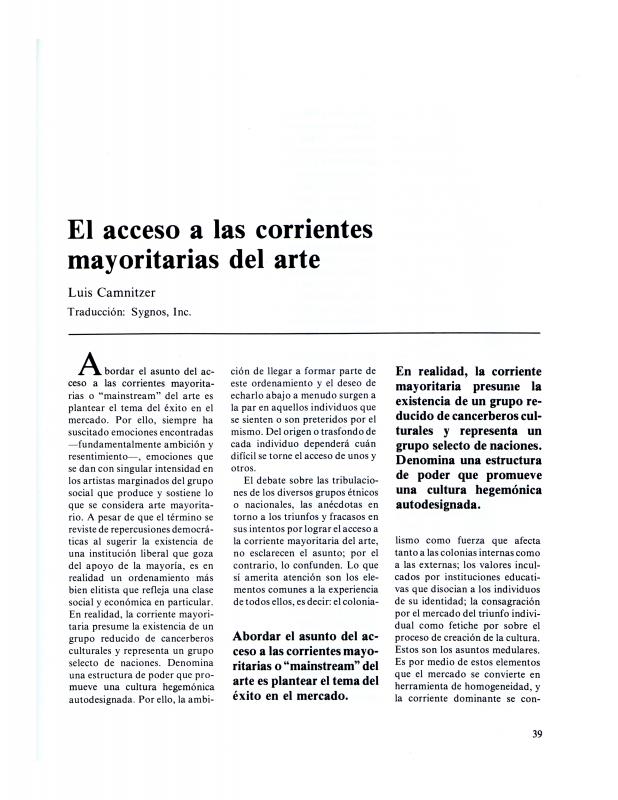The essay by the Uruguayan artist Luis Camnitzer (b. 1937) about the NYGW (New York Graphic Workshop) exhibition—that included works by José Guillermo Castillo (Venezuela, b. 1938), Liliana Porter (Argentina, b. 1941), and Camnitzer—provides a thorough, first-hand analysis of the work inspired by the 1966 FANDSO Manifesto; it was published in the catalogue for the Liliana Porter exhibition (Buenos Aires: Centro Cultural Recoleta, 2004). In 1969, three years after it was published, Camnitzer clarifies his idea, suggesting conceptual and technical categories and following the idea through to its ultimate conclusions, meaning the self-destruction of the art object and the function of the artist. This document thus has an intrinsic meaning. Camnitzer, who was one of the founders of FANDSO, takes time to explain the concept in detail, justifying its meaning and projecting it into the future, just a few years after the idea was originally expressed in the manifesto. He also presents the concept of FANDSO for consideration in terms of theories associated with psychology, sociology, and art history. The essay provides an in-depth review of the concept, offers a conceptual proposition of art, and draws on the written word and the techniques of the publishing industry, using as support material the catalogue for the NYGW’s 1969 exhibition in Caracas.
To read more of Luis Camnitzer’s critical reflections, see the article from 1968 “Art in Editions: New Approaches” [doc. no. 777430]; the article from 1987 “La educación artística en Latinoamérica trasciende el problema de la identidad cultural” [doc. no. 805061]; the article from 1988 “La colección latinoamericana del museo Guggenheim” [doc. no. 1089886]; the review from 1991 “El acceso a las corrientes mayoritarias del arte” [doc. no. 805271]; and the document from 2004 “El New York Graphic Workshop” [doc. no. 785884].





